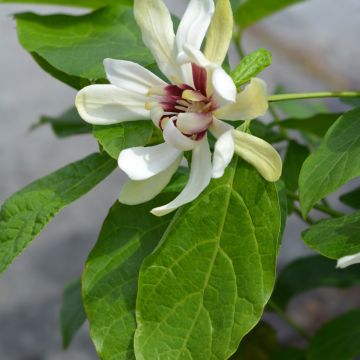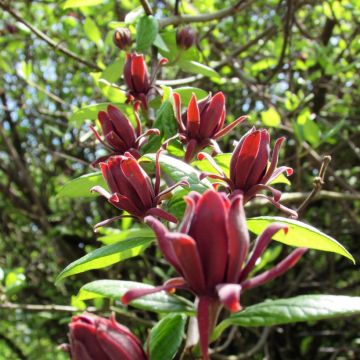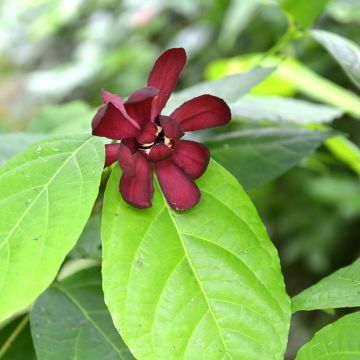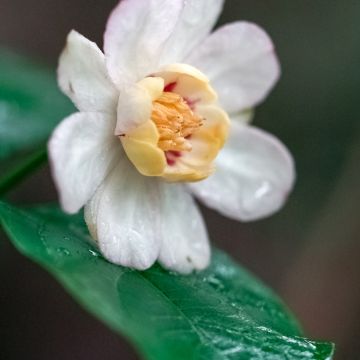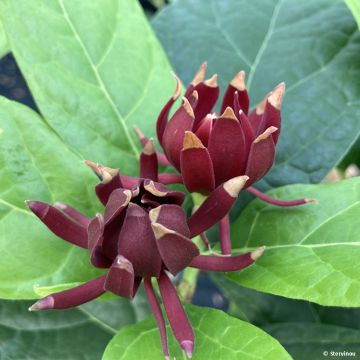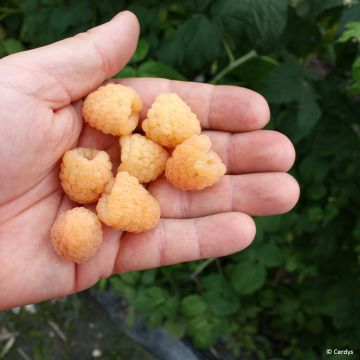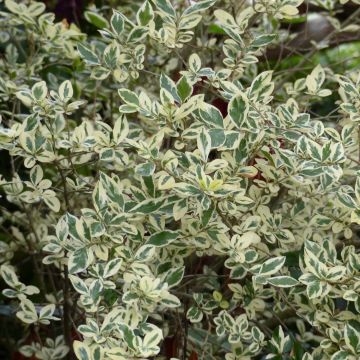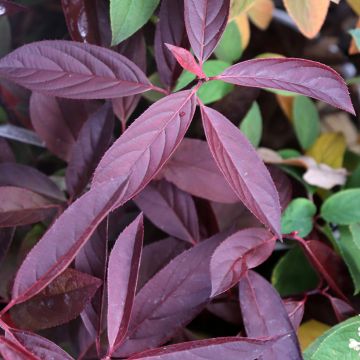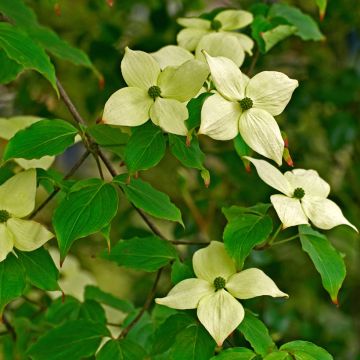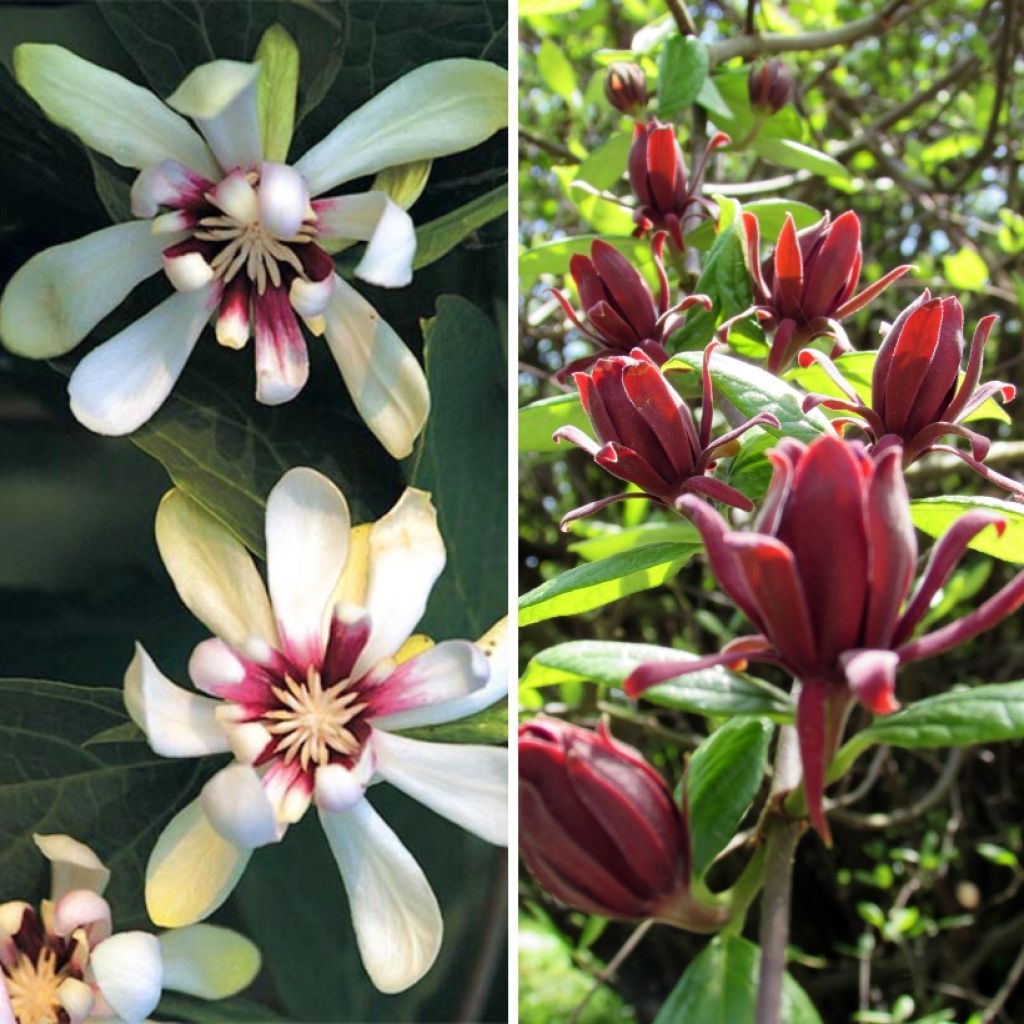

Duo Calycanthus - Anemone trees
Duo Calycanthus - Anemone trees
Calycanthus
Sweetshrub, Spicebush, Carolina Allspice
Special offer!
Receive a €20 voucher for any order over €90 (excluding delivery costs, credit notes, and plastic-free options)!
1- Add your favorite plants to your cart.
2- Once you have reached €90, confirm your order (you can even choose the delivery date!).
3- As soon as your order is shipped, you will receive an email containing your voucher code, valid for 3 months (90 days).
Your voucher is unique and can only be used once, for any order with a minimum value of €20, excluding delivery costs.
Can be combined with other current offers, non-divisible and non-refundable.
Home or relay delivery (depending on size and destination)
Schedule delivery date,
and select date in basket
This plant carries a 24 months recovery warranty
More information
We guarantee the quality of our plants for a full growing cycle, and will replace at our expense any plant that fails to recover under normal climatic and planting conditions.
Would this plant suit my garden?
Set up your Plantfit profile →
Description
This Duo of Calycanthus brings together two varieties of deciduous shrubs prized for their original and fragrant flowering in May-June. The Calycanthus 'Venus' has a remarkable white flowering with a purple heart, while its cousin, the Calycanthus floridus, surprises with its dark red flowers reminiscent of water lilies. The flowers of these shrubs emit a surprising and sweet strawberry fragrance. With a graceful and loose habit, reaching about 2m in all directions, they can be planted as solitary specimens or in free hedges. Plant them in a sunny location, in deep, moist, rich, and well-drained soil.
This duo consists of:
1 Calycanthus x raulstonii 'Venus': this shrub produces 6cm diameter, white, and fragrant flowers. When the flower bud is fully open, a purple heart is revealed, which gives this variety its unique beauty. The plant blooms from a young age.
1 Calycanthus floridus: a species native to the United States, offering 4cm flowers with ribbon-like petals in a beautiful red-brown colour. The shrub can reach 2.50m in all directions under good conditions.
The Calycanthus is also called anemone tree because of the shape and size of its flowers, which resemble these pretty shade perennials. However, the fragrance is quite different, reminiscent of strawberries, so the English name "Strawbush" refers to this characteristic. The Calycanthus appreciates humus-rich and well-drained soil that remains moist in summer in a sunny location. Avoid somewhat chalky and dry soils. Protect it from strong and cold winds. It needs summer heat to flower and lignify. Plan to space 2 Calycanthus plants at least 1m apart, or even 1.50m.
Calycanthus can be used according to each gardener's desires and the available space. It can be used as a solitary specimen, in a free and rustic hedge, or a large bed mixing perennials and small shrubs. The fragrance and beauty of the flowers are best enjoyed near a pathway or not far from the terrace. To accompany the anemone trees in this duo, you can choose, for example, tree peonies, a pheasant bush, a golden-leaved physocarpus, or a variegated foliage Weigela.
Tip: Be careful. The seeds produced by the Calycanthus are toxic to cattle and sheep, so do not plant them in hedges near pastures.
Report an error about the product description
Plant habit
Flowering
Foliage
Botanical data
Calycanthus
Calycanthaceae
Sweetshrub, Spicebush, Carolina Allspice
Cultivar or hybrid
Other Calycanthus
View all →Planting and care
The Calycanthus tolerates partial shade but thrives in full sun. Similarly, it grows in all soil types but will develop better in slightly acidic to neutral soil (it doesn't like limestone). A lightened soil enriched with good-quality compost will suit it. Feel free to pair it with your ericaceous beds, with rhododendrons, camellias, and azaleas. It can be kept in both pots and open ground; however, in pots, it will be necessary to ensure that the moisture does not stagnate and that the substrate does not dry out. Be sure to remove the suckers if you do not want it to spread too much.
Planting period
Intended location
Care
This item has not been reviewed yet - be the first to leave a review about it.
Similar products
Haven't found what you were looking for?
Hardiness is the lowest winter temperature a plant can endure without suffering serious damage or even dying. However, hardiness is affected by location (a sheltered area, such as a patio), protection (winter cover) and soil type (hardiness is improved by well-drained soil).

Photo Sharing Terms & Conditions
In order to encourage gardeners to interact and share their experiences, Promesse de fleurs offers various media enabling content to be uploaded onto its Site - in particular via the ‘Photo sharing’ module.
The User agrees to refrain from:
- Posting any content that is illegal, prejudicial, insulting, racist, inciteful to hatred, revisionist, contrary to public decency, that infringes on privacy or on the privacy rights of third parties, in particular the publicity rights of persons and goods, intellectual property rights, or the right to privacy.
- Submitting content on behalf of a third party;
- Impersonate the identity of a third party and/or publish any personal information about a third party;
In general, the User undertakes to refrain from any unethical behaviour.
All Content (in particular text, comments, files, images, photos, videos, creative works, etc.), which may be subject to property or intellectual property rights, image or other private rights, shall remain the property of the User, subject to the limited rights granted by the terms of the licence granted by Promesse de fleurs as stated below. Users are at liberty to publish or not to publish such Content on the Site, notably via the ‘Photo Sharing’ facility, and accept that this Content shall be made public and freely accessible, notably on the Internet.
Users further acknowledge, undertake to have ,and guarantee that they hold all necessary rights and permissions to publish such material on the Site, in particular with regard to the legislation in force pertaining to any privacy, property, intellectual property, image, or contractual rights, or rights of any other nature. By publishing such Content on the Site, Users acknowledge accepting full liability as publishers of the Content within the meaning of the law, and grant Promesse de fleurs, free of charge, an inclusive, worldwide licence for the said Content for the entire duration of its publication, including all reproduction, representation, up/downloading, displaying, performing, transmission, and storage rights.
Users also grant permission for their name to be linked to the Content and accept that this link may not always be made available.
By engaging in posting material, Users consent to their Content becoming automatically accessible on the Internet, in particular on other sites and/or blogs and/or web pages of the Promesse de fleurs site, including in particular social pages and the Promesse de fleurs catalogue.
Users may secure the removal of entrusted content free of charge by issuing a simple request via our contact form.
The flowering period indicated on our website applies to countries and regions located in USDA zone 8 (France, the United Kingdom, Ireland, the Netherlands, etc.)
It will vary according to where you live:
- In zones 9 to 10 (Italy, Spain, Greece, etc.), flowering will occur about 2 to 4 weeks earlier.
- In zones 6 to 7 (Germany, Poland, Slovenia, and lower mountainous regions), flowering will be delayed by 2 to 3 weeks.
- In zone 5 (Central Europe, Scandinavia), blooming will be delayed by 3 to 5 weeks.
In temperate climates, pruning of spring-flowering shrubs (forsythia, spireas, etc.) should be done just after flowering.
Pruning of summer-flowering shrubs (Indian Lilac, Perovskia, etc.) can be done in winter or spring.
In cold regions as well as with frost-sensitive plants, avoid pruning too early when severe frosts may still occur.
The planting period indicated on our website applies to countries and regions located in USDA zone 8 (France, United Kingdom, Ireland, Netherlands).
It will vary according to where you live:
- In Mediterranean zones (Marseille, Madrid, Milan, etc.), autumn and winter are the best planting periods.
- In continental zones (Strasbourg, Munich, Vienna, etc.), delay planting by 2 to 3 weeks in spring and bring it forward by 2 to 4 weeks in autumn.
- In mountainous regions (the Alps, Pyrenees, Carpathians, etc.), it is best to plant in late spring (May-June) or late summer (August-September).
The harvesting period indicated on our website applies to countries and regions in USDA zone 8 (France, England, Ireland, the Netherlands).
In colder areas (Scandinavia, Poland, Austria...) fruit and vegetable harvests are likely to be delayed by 3-4 weeks.
In warmer areas (Italy, Spain, Greece, etc.), harvesting will probably take place earlier, depending on weather conditions.
The sowing periods indicated on our website apply to countries and regions within USDA Zone 8 (France, UK, Ireland, Netherlands).
In colder areas (Scandinavia, Poland, Austria...), delay any outdoor sowing by 3-4 weeks, or sow under glass.
In warmer climes (Italy, Spain, Greece, etc.), bring outdoor sowing forward by a few weeks.






























